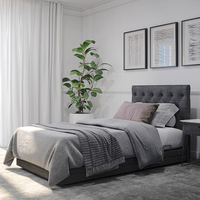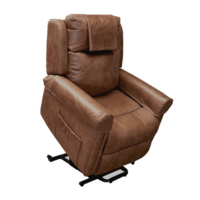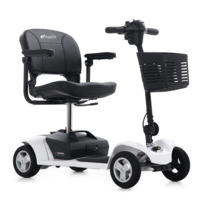What You Need to Know About Pressure Care at Home
Anyone caring for an elderly or immobile person at home needs to know about pressure sores and how to manage them.
Also known as bedsores, pressure sores can develop when a person with limited mobility spends extended periods of time in a chair or bed. They commonly occur when there is prolonged pressure on bony areas of the body, like the buttocks, elbow, heel, shoulder, lower back or head.
Even mild pressure sores can be difficult to treat and may lead to more serious issues. Which is why prevention is so important. This can include regular position changes, good hygiene and proper skin care and the use of suitable pressure care cushions and mattresses at home.
How serious are pressure sores?

Pressure sores affect thousands of people every year in varying care settings, including at home, managed care facilities and hospitals. They can take a while to heal and cause ongoing pain and discomfort, disrupt sleep and lead to infection.
The severity of pressure sores range from mild to severe, and are categorised as:
Stage 1 – mild changes in colour, temperature and texture of the affected skin
Stage 2 – shallow ulcer or blister with clear fluid
Stage 3 – deeper blister with a yellow liquid and scabbing Stage 4 – a deep ulcer that extends down to bone, muscle or tendon with scabbing
Each stage of pressure injury requires the appropriate level of care and monitoring to make sure it doesn’t become more serious.
Pressure care at home
Anyone who has reduced mobility is at risk of a pressure injury. People who live alone and who may not be able to move about without assistance can be especially at risk. You should also consider pressure care for people whose mobility has changed suddenly as a result of illness or injury as they and their carers may not be aware of the risks of pressure sores.
You can prevent pressure sores by changing position regularly, maintaining good nutrition and hygiene, and checking the body regularly for signs of pressure injuries
If you think you or someone you care for is at risk of pressure sores, you may also need specialist pressure care products to help to prevent skin breakdown.
How to choose the right pressure care products
Pressure care cushions and mattresses are designed to help with pressure relief. They can be made from foam, gel and air – which one you need depends on the level of pressure relief required.
In the low-risk range are memory foam cushions. Memory foam helps to absorb the user’s weight and spread it out more evenly. These provide a low-level amount of pressure relief and are ideal if you spend a few hours in the same position.
Gel cushions provide a higher level of pressure relief. As with foam cushions, a gel cushion helps to absorb and distribute the user’s weight. They also tend to be far cooler than other support cushions, which can provide added comfort. Gel pressure relief cushions include flat and contoured options.
Air cushions feature soft, flexible, interconnected air cells that distribute pressure evenly across the surface. These cushions minimise friction and promote stability. The modular design allows them to be adjusted to the user’s specific shape and needs. Air cushions are appropriate for people at high-risk of developing pressure sores.
In the same way that pressure cushions help to prevent injuries when seated, pressure care mattresses can provide relief and support while reclining and sleeping. These are available in a range of materials including foam, gel, air and hybrid options.
If you’re worried about pressure sores or want to know what pressure relief options are available, you should first speak with your medical professional. They’ll help you work out a care plan that best suits your circumstances and find the pressure care products to help you.
You can also chat with our friendly team to find out more about pressure cushioning and support.
Browse the full range of pressure care cushions, mattresses and products at Mobility HQ.
































